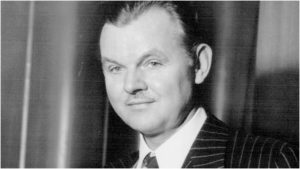
The 5 Iconic Metropolitan Opera Roles of Lawrence Tibbett
By David SalazarLawrence Tibbett was one of the shining stars of the Metropolitan Opera in the pre-World War II era.
The baritone, born on Nov. 16, 1896, would sing over 600 performances with the company between his debut on Nov. 24, 1923 and his final performance on March 24, 1950. Interestingly, he began his Met career as a bit role in “Boris Godunov” before ending it with another Mussorgsky opera, “Khovanshchina.”
But he dominated at the Met with a number of other different roles in a completely different kind of repertoire. Here is a look at Tibbett’s iconic Met portrayals.
Simon Boccanegra
The baritone was one of the renowned interpreters of Verdi’s benevolent leader and he was the one to lead the opera in its Metropolitan Opera premiere on Jan. 28, 1932 under the musical direction of Tullio Serafin. Of his work, W.J. Henderson of The New York Sun wrote, “Lawrence Tibbett assumed the sins and responsibilities of Simon Boccanegra, around whom the whole work revolves. He achieved one of the artistic successes of his career by presenting a finely wrought characterization in which admirable singing and acting, appropriate costume, and skillful makeup were harmoniously combined. Mr. Tibbett’s excursions into the realm of the motion picture have taught him much about dress, facial expression, and gesture. He is now one of the best actors on the operatic stage. His Simon Boccanegra is a noteworthy addition to the Metropolitan’s gallery of portraits.”
He took on the role of Simon Boccanegra 20 times at the Met.
La Traviata
The baritone took on the role of Germont 50 times throughout his Met career, his first performance coming on Jan. 24, 1924 and his last on Jan. 29, 1947.
Rigoletto
In keeping with the Verdi theme, Tibbett took on the iconic jester 36 times at the Met, the first such occasion taking place on Dec. 1, 1923, and the last on March 6, 1949.
Aida
Yet another Verdi opera, the baritone was one of the leading Amonasro interpreters of his time, singing the role 29 times at the Met between 1928 and 1947. Of his performance, James H. Rodgers of the Cleveland Plain Dealer noted, “he was a quite convincing equatorial African, although if you had seen him in ‘Falstaff’ or ‘The Jester’s Supper’ you would not have thought it possible. His singing was of its usual admiral quality.”
Tosca
One of the non-Verdi operas that he dominated at the Met, the baritone was a famous proponent of the villainous Scarpia, taking on the role 29 times in his Met career between 1931 and 1950.


